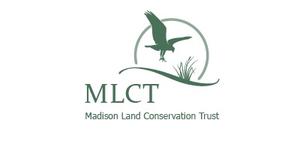Starting at the trailhead, the trail heads north along the well-defined woods road. On the left, at the bottom of the dip near the State Forest gate, is the junction of the Blinnshed Ridge Trail. On that trail, almost immediately, is an old, stone-lined fire pond that once provided a source of water for firefighting.
Where the road enters a white pine plantation the Blinnshed Loop soon crosses a small, intermittent stream. This flows into the eastern end of an extensive wetland. Early spring brings lush groundcovers of skunk cabbage and false hellebore and a bit later, a yellow haze of spicebush flowers.
After a short rise, the old road drops and crosses a larger stream that year-round feeds the wetland. The trail crosses over stepstones to the north (right) and continues uphill to a large opening where several logging roads intersect. To the left, the trail makes a short loop and returns to the intersection. The main trail turns north (right) and soon splits. This point is the base of the loop. Continuing straight for a bit, leads to a view of a stream bed on the east. This area is under active forest management.
The logging roads, stumps of trees, and young saplings testify to a history of harvest and regeneration cuts. The forest here is characteristic of second-growth forests in our region. There is an abundant array of species, including several oaks, maples, birches, and many others. The mosaic-like pattern is determined, in part, by variations in topography and available moisture.
Just beyond where the trail passes through a stone wall, and before reaching the next one, is a small, dense plantation of Norway spruce. This group of conifers provides thermal cover for deer. In the winter, deer shelter here in this “warm” spot.
Just past the plantation, to the northwest (left) but not readily visible from the trail, are several beautiful large vernal pools that are breeding habitats for many species of frogs and salamanders.
The trail then ascends a small rise and passes through a stone wall. The latter continues along the right side of the path and is graced by very large, tall, tulip-poplar trees. The wall marks the State Forest boundary. Soon the trail becomes less defined before it turns west (left), descends, and crosses two wet swales.
The trail continues west and then south along the State Forest boundary before descending past a large rock to an extensive and lovely wet swale. Step stones of log sections make this crossing less formidable than it first appears. However, the next crossing of this wetland is more difficult, especially in times of high water. A decked walkway helps ford the deepest sections.
The trail continues south and follows old logging roads back to the base of the loop and then to the large intersection opening. This loop circles another Norway spruce “deer yard,” and affords excellent views of the extensive swamp wetland below. The wetland eventually drains to the west and into the Neck River, flowing south through the western side of this important swampland.
The Mill was active in the early and mid-1800s. This mill was used for sawing ship timber and other timber for Eber Hotchkiss, Hiram Wilcox and other local boatbuilders. Although the extensive ruins of the dam, sluiceway, and mill are still very evident, little documentation of its construction and ownership is available.

Opening Hill Road can be accessed off Durham Road (Route 79) directly from the north or from the south from Warpas Road to Winterhill Road and finally connecting to Opening Hill. Continue on Opening Hill until it splits right into Blinnshed Road. Parking is on the right side of the road.
Parking is located near the trailhead and at The Country School
Success! A new password has been emailed to you.